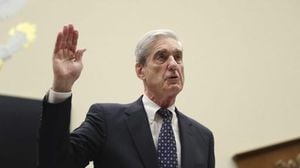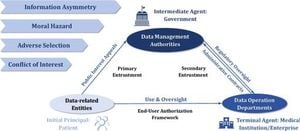The Federal Reserve announced on January 31, 2025, it would keep its benchmark lending rate unchanged amid increasing economic uncertainties, including rising inflation concerns and potential policy changes from President Donald Trump, who has signaled intentions to impose new tariffs. This decision marks the first policy move of the year from the central bank, which has recently reduced interest rates across three consecutive meetings.
Currently, the federal funds rate remains steady at a range between 4.25% and 4.50%. Economic analysis suggests this rate is somewhat restrictive, which could influence various sectors, from employment to consumer goods pricing. Notably, the Fed had been under pressure to ease rates after signs of stronger-than-expected economic growth and inflationary fears surfaced once again.
With inflation hovering near 3%, the Federal Reserve aims to bring it down to its target rate of 2%. Jerome H. Powell, the Chair of the Federal Reserve, emphasized during a news conference, "That’s what we do, that's always what we do. Don't look for us to do anything else," reinforcing the commitment to the Fed’s independence amid Trump’s public opt-in for lower rates.
Greg McBride, chief financial analyst at Bankrate.com, shared insights on the shifting economic dynamics, stating, "Borrowers shouldn’t bank on the Fed being in any hurry to cut interest rates again." He warned if inflation pressures continue or worsen, rate cuts may be stalled altogether.
The tension between the Federal Reserve and the Trump administration has re-emerged, particularly considering Trump’s potential direct pressure for lower rates. The President has previously voiced his discontent with the Fed’s actions, hinting at consequences if the central bank does not align with his economic agenda. Despite this, Powell noted, he has had "no contact" with Trump since the President's recent comments urging rate reductions.
The immediate financial markets reacted to the Fed's decision with declines. The S&P 500 fell 0.47% to close at 6,039.31, and the Nasdaq Composite decreased by 0.51%. The Dow Jones Industrial Average slid down by 136.83 points, or 0.31%, settling at 44,713.52. The declining markets underscored investors’ cautious sentiment surrounding both the Fed's policy and Trump's administration policies.
Market analysts described the Fed's recent statement as "a little hawkish," indicating unease among investors who are eyeing the interplay of forthcoming presidential policies and economic data leading up to the next Fed meeting scheduled for March 2025. David Russell, global head of market strategy at TradeStation, remarked, "The meeting is a non-event for Fed watchers. The central bank wants to be less of a factor over the next month as Trump takes the spotlight." This perspective highlights the anticipated focus on Trump's policy announcements, particularly related to trade and tariffs.
With Trump’s apparent readiness to impose tariffs on various countries, economists warn this measure could dampen U.S. economic activity and reignite inflation, creating increased pressure on the Fed. Experts believe the reduction of the labor force, spurred by immigration policy changes, could lead to increased wage competition, thereby fueling inflationary pressures.
The economic outlook remains uncertain. Many analysts view Trump’s ambitions, including calls to reduce oil prices through international negotiations, as potentially conflicting with his own tariff policies. Christopher Rupkey, chief economist at Fwdbonds, commented, "The 800-pound gorilla in the room, of course, is the newly elected president. His view on interest rates is known... regardless of the logic, he just wants interest rates to be lower." This sentiment captures the tension between desired economic growth and inflation management strategies.
Overall, the Federal Reserve is faced with the formidable task of balancing its independently determined economic policies against external pressures from Presidential directives and changing economic indicators. With the prospect of higher tariffs, and the impacts of recent economic shifts — including the consequences of the extreme wildfires affecting California — analysts continue to speculate on the future course of U.S. monetary policy.
For now, the Federal Reserve is likely to tread carefully, weighing data before pursuing additional rate adjustments, but the undercurrents of political influence and economic uncertainty could very well shape the road ahead.



